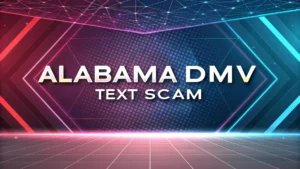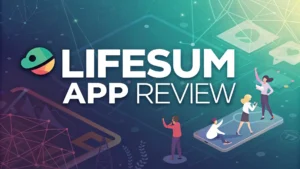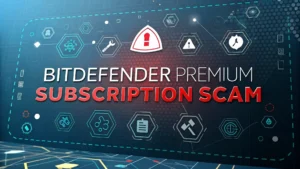Tax season brings a wave of stress for many people. This stress creates the perfect chance for scammers to trick you with fake tax relief offers. These criminals use clever tricks to sound real when they call. They claim to be from the IRS or tax relief companies.
They say they can solve your tax problems easily. But their real goal is to steal your money and personal information. Tax relief scam calls have become more common in recent years. The scammers use fear and pressure to make you act quickly without thinking.
This post will help you understand how these scams work. You will learn how to spot the warning signs. You will discover steps to protect yourself. And you will find out what to do if you get one of these calls.
Key Takeaways
- The IRS will never call you first about tax issues – they always send official letters through the mail before making phone contact.
- Legitimate tax relief options do exist through the IRS, including payment plans, Offer in Compromise, and Currently Not Collectible status.
- Tax scammers often create fake urgency by claiming you will be arrested or face legal action if you don’t pay immediately.
- Never share personal information like Social Security numbers, bank details, or credit card information with unknown callers.
- Scammers frequently ask for unusual payment methods like gift cards, wire transfers, or cryptocurrency – the IRS never asks for these payment types.
- Official IRS communications include specific letter or notice numbers that you can verify on the IRS website.
- Always hang up if you receive a suspicious call and contact the IRS directly using official numbers from their website.
- Report tax scams to help authorities track and stop these criminals by contacting the Treasury Inspector General for Tax Administration at 1-800-366-4484.
- Watch out for spoofed caller ID – scammers can make their calls appear to come from legitimate IRS phone numbers.
- Legitimate tax professionals will not make outrageous promises about eliminating all your tax debt or guarantee specific outcomes.
- Tax relief scammers often target vulnerable populations including elderly people, immigrants, and those with known tax problems.
How Tax Relief Scam Calls Work
Tax relief scam calls follow a calculated pattern designed to trap victims. The scammer calls you out of the blue. They claim to be from the IRS or a tax relief company. The caller often uses spoofed phone numbers that look like they come from Washington DC or IRS offices. This false display makes the call seem more legitimate.
During the call, the scammer tells you that you owe back taxes. They claim you face serious consequences like arrest, property seizure, or license suspension. The scammer creates a sense of immediate danger to cloud your judgment. They know that fear can make you act without thinking clearly.
The scammer then offers a solution to your supposed tax problems. They promise to reduce or eliminate your tax debt through special programs. These offers sound too good to be true because they are not real. Legitimate tax relief takes time and follows strict IRS guidelines.
Top 5 Amazon Prime Day Deals (Don't Miss)
- RUGGED. RELIABLE. READY FOR ANYTHING: Climb the highest peak; Bike the long way home; The durable titanium design is our...
- USE YESTERDAY TO BEAT TODAY: Meet your biggest competition — you; Challenge yourself to perform at your peak on your next...
- SONY’S LIGHTEST WIRELESS NOISE CANCELING HEADBAND EVER: Weighing just 192g, our lightest overhead wireless headphones with...
- DUAL NOISE SENSOR TECHNOLOGY: Take noise canceling to the next level with Sony’s Integrated Processor V1, so you can fully...
- SOUND BY BOSE. We teamed up with Bose to bring you a high-fidelity audio experience defined by clarity of sound and depth of...
- SUPERIOR ACTIVE NOISE CANCELLING. Block out the world and dive into pure sound with next-level noise cancellation.
- BLUEAIR’S TOP-PERFORMING AIR PURIFIER LINE: Blue family’s new Pure Max series with our proprietary HEPASilent performance...
- LET’S CLEAR THE AIR QUIETER: Quiet Mark certified (23-53dB); Cleans up to 3,048 sqft space in 60 min,1,524sqft in 30min or...
- SINGLE SERVE COFFEE MAKER: Single serve coffee or espresso at the touch of a button. Innovative programs and features such as...
- COFFEE FOR EVERY OCCASION: Brew better coffee at home with Nespresso's single serve coffee maker. Drink your coffee bold,...
To solve your “problem,” the scammer demands payment right away. They insist on unusual payment methods like gift cards, wire transfers, or cryptocurrency. These payment methods are hard to trace and impossible to recover. Real tax agencies never ask for these types of payments.
Some sophisticated scammers have access to partial information about you. They might know about recent IRS letters you received or general details about your finances. They use this information to sound more convincing. This targeted approach makes their scams more dangerous.
Red Flags to Identify Tax Relief Scam Calls
Knowing the warning signs of tax relief scam calls can save you from becoming a victim. Pay attention to these clear red flags during any tax-related call.
The call comes without prior written notice from the IRS. The real IRS always sends official letters before calling taxpayers. If you receive a call without getting mail first, be suspicious.
The caller demands immediate payment and won’t let you review your tax situation. Legitimate tax representatives allow time for verification and appeals. They don’t rush you into making payments.
Watch out for callers who request specific payment methods like gift cards, prepaid debit cards, or wire transfers. The genuine IRS never asks for these payment types. They accept checks, credit cards, and electronic transfers through their official payment system.
Be alert if the caller threatens you with arrest, deportation, or license revocation. Real IRS agents don’t make these threats during phone calls. They follow proper legal procedures that involve written notices and court hearings.
The scammer might create fake urgency by claiming special programs are expiring soon. They say you must act now to get tax relief. Legitimate tax relief programs have clear guidelines and application procedures without artificial deadlines.
Listen for poor grammar or unusual speech patterns. Many tax scam operations run from overseas call centers where English is not the primary language. Professional IRS employees communicate clearly and professionally.
Be wary if the caller knows partial information about you but needs to “verify” sensitive details. Scammers often have some basic information but fish for valuable data like Social Security numbers or bank account details.
If the caller becomes aggressive or insulting when you ask questions, that’s a major warning sign. Legitimate tax professionals remain professional even when challenged. They provide badge numbers and contact information for verification.
Common Tax Relief Scam Scenarios
Tax relief scammers use several common scenarios to trick victims. Understanding these tactics helps you stay alert and protected.
The “You Owe Back Taxes” scam is very common. The caller claims you have unpaid taxes from previous years. They say you face immediate penalties unless you pay now. The scammer often has a threatening tone and pressures you to make quick decisions. They might even quote specific tax laws to sound more convincing.
Another popular tactic is the “Special Tax Forgiveness Program” scam. The caller claims the IRS has a limited-time program to forgive tax debt. They say you qualify for this program but must pay a fee to enroll. In reality, the IRS offers specific resolution options but never through random phone calls or with application fees.
The “Tax Return Error” scam targets people during tax filing season. The scammer claims they found errors in your recent tax return. They say you must pay additional taxes immediately to avoid severe penalties. They might claim that your tax preparer made mistakes that must be fixed right away.
Many victims fall for the “Refund Recalculation” scam. The caller says you’re eligible for a larger refund than you received. To get this money, you must verify your personal information and pay a processing fee. The scammer is actually trying to collect your personal data for identity theft.
The “Tax Relief Company” scam involves callers pretending to be from legitimate tax resolution firms. They promise to settle your tax debt for pennies on the dollar. These scammers charge upfront fees for services they never provide. They might even ask for power of attorney to access your tax records.
Some sophisticated scammers run the “Follow-Up Call” scam. They reference a letter supposedly sent to you about tax issues. The scammer creates a sense of continuity to seem legitimate. They might even provide a fake case number or reference previous IRS communications you’ve received.
How Scammers Manipulate Victims Psychologically
Tax relief scammers use powerful psychological tactics to manipulate victims. Understanding these methods helps you resist their persuasion attempts.
Fear is the primary weapon scammers use. They create scenarios where you face arrest, property loss, or legal problems. This fear triggers your fight-or-flight response, making rational thinking harder. When scared, people make decisions they normally wouldn’t.
Scammers also use false authority to gain compliance. They claim to be IRS agents with legal power over you. They might use technical language or quote tax codes to sound knowledgeable. This perceived authority makes victims more likely to follow their instructions without question.
The scarcity principle appears in many tax scams. The caller claims special programs are ending soon or limited spots remain. This creates a sense that you must act now or miss the opportunity. The artificial deadline prevents you from researching or seeking advice.
Successful scammers use social proof by mentioning how many others have benefited from their services. They share testimonials or statistics about people who resolved tax problems through them. These stories make their claims seem more credible and normal.
Reciprocity plays a role when scammers offer to help you. They position themselves as doing you a favor by finding tax relief options. This creates a sense that you should return the favor by cooperating with them.
Many scams involve commitment and consistency tactics. The scammer gets you to agree to small statements first. Then they build toward bigger commitments. Once you’ve agreed to some points, you feel more pressure to remain consistent with your initial agreement.
Tax relief scammers exploit personal information they’ve gathered about you. They might mention your past tax filings or recent IRS notices. This personalization makes the scam seem legitimate because they know specific details about your tax situation.
Legitimate Tax Relief Options Through the IRS
Despite the prevalence of scams, the IRS does offer genuine tax relief programs. Understanding these options helps you distinguish between legitimate assistance and fraud.
The Installment Agreement is the most common tax relief option. This program lets you pay your tax debt over time through monthly payments. The IRS considers your financial situation when setting payment amounts. You can apply online, by phone, or by mail using Form 9465.
For taxpayers who cannot pay their full tax debt, the Offer in Compromise program might help. This allows you to settle your tax debt for less than the full amount owed. Qualification depends on your ability to pay, income, expenses, and asset equity. The application process is thorough and requires Form 656.
The IRS may grant Currently Not Collectible status if paying taxes would create financial hardship. This temporarily pauses collection activities until your financial situation improves. You must provide detailed financial information to qualify. The tax debt remains, but collection actions stop.
Penalty Abatement offers relief from penalties added to your tax bill. The IRS might remove penalties if you had reasonable cause for not complying with tax laws. Valid reasons include serious illness, natural disasters, or unavoidable absences. First-time penalty abatement is available for those with good compliance history.
The Innocent Spouse Relief program helps taxpayers who didn’t know their spouse filed incorrect tax returns. This relief prevents you from being responsible for taxes, interest, and penalties caused by your spouse’s errors. You must file Form 8857 to request this protection from joint liability.
For taxpayers experiencing serious financial problems, the Hardship Program provides options. The IRS evaluates your essential living expenses against your income. If you cannot pay taxes and maintain basic necessities, the IRS may work with you on alternative arrangements.
All legitimate IRS programs require proper documentation and follow established procedures. The IRS never demands immediate payment or threatens immediate arrest during initial contacts. All official relief programs can be verified through the IRS website or by calling official IRS phone numbers.
How to Protect Yourself from Tax Relief Scams
Taking proactive steps can shield you from tax relief scams. These practical measures create a strong defense against fraudsters.
Know how the IRS communicates. The IRS first contacts taxpayers through official mail delivered by the U.S. Postal Service. They don’t initiate contact through phone calls, emails, or text messages. Always be suspicious of unexpected calls claiming to be from the IRS.
Verify all tax notices. If you receive a call about a tax issue, ask for a written notice by mail. Legitimate IRS notices include a notice number (like CP501 or LT11) that you can verify on the IRS website. Real notices also provide clear instructions for appealing or questioning the notice.
Protect your personal information. Never share sensitive data like Social Security numbers, birth dates, or bank account details with callers. Legitimate tax officials already have your basic information and won’t need to verify these details over the phone.
Use official channels to resolve tax issues. If you’re concerned about tax problems, contact the IRS directly using phone numbers from their official website (irs.gov). Don’t use phone numbers provided by callers or in suspicious emails. Official IRS resources provide legitimate guidance and assistance.
Consult with tax professionals. Licensed tax preparers, CPAs, and tax attorneys can help you address tax problems. They understand legitimate relief options and can spot scams. Professional advice provides peace of mind when dealing with tax concerns.
Register for an online account with the IRS at irs.gov. This allows you to view your tax record and any amounts owed. Having direct access to your tax information helps you quickly verify any claims about your tax status.
Stay informed about current tax scams. The IRS regularly publishes information about new scam tactics. Following tax news helps you recognize emerging threats. Knowledge is your best defense against evolving scam techniques.
Trust your instincts. If something feels wrong during a call, it probably is. Legitimate tax representatives don’t use pressure tactics or make threats. It’s better to end suspicious calls and verify the information through official channels.
What to Do If You Receive a Tax Relief Scam Call
Taking the right actions when you receive a suspicious call can protect you and help authorities catch scammers.
Remain calm during the call. Scammers rely on emotional reactions to cloud your judgment. Take deep breaths and listen critically to what they’re saying. Try to gather information about their claims without revealing personal details.
Don’t engage with the caller’s demands or threats. Avoid arguing or challenging them directly. Instead, use neutral phrases like “I’ll need to verify this information” or “I’ll need to consult with my tax professional.” This gives you time to step back from the situation.
End the call if you suspect it’s a scam. You don’t need to be polite or explain yourself. It’s perfectly acceptable to hang up immediately. Your safety and security take priority over social norms in these situations.
Write down details about the call while they’re fresh in your mind. Note the caller’s name, badge number (if provided), the phone number they called from, and what they said. These specific details help when reporting the scam.
Verify any tax issues by contacting the IRS directly. Use the official IRS phone number (800-829-1040) or visit irs.gov. Ask if you have any outstanding tax issues or if the IRS has been trying to contact you. This direct confirmation quickly reveals scam attempts.
Report the scam to proper authorities. Contact the Treasury Inspector General for Tax Administration (TIGTA) at 800-366-4484 or visit tigta.gov. You can also report the incident to the Federal Trade Commission at ftc.gov/complaint. Reporting helps authorities track and stop scammers.
Alert your financial institutions if you shared any payment information with the scammer. Your bank or credit card company can monitor for suspicious activity and may be able to stop fraudulent transactions.
Check your credit reports if you shared personal information. Place a fraud alert with the major credit bureaus (Experian, TransUnion, and Equifax). This extra security measure can prevent identity theft following a scam attempt.
How Scammers Target Vulnerable Populations
Tax relief scammers often focus their efforts on specific groups who may be more susceptible to their tactics.
Elderly individuals are prime targets for tax scammers. Older adults may be less familiar with current scam techniques. They often have retirement savings and may worry more about government authority. Scammers exploit their trust and respect for official institutions.
Non-native English speakers face particular challenges with tax scams. Language barriers make it harder to detect unusual phrasing or suspicious requests. Scammers may claim to offer special assistance for immigrants or international taxpayers.
People with known tax problems find themselves targeted by sophisticated scammers. If you’ve received legitimate IRS notices or have public tax liens, scammers may learn this information. They use these real tax issues to make their scams more convincing.
Small business owners experience frequent tax scam attempts. Their business taxes are more complex, and they worry about audits affecting their livelihood. Scammers claim to find business tax errors that need immediate attention.
Recent tax filers often receive scam calls during tax season. Scammers know you’re thinking about taxes and may have questions about your return. They claim to find filing errors that need correction to avoid penalties.
Low-income individuals may be targeted with offers of larger refunds or credits. Scammers promise to find tax benefits you didn’t claim. They particularly focus on refundable credits like the Earned Income Tax Credit.
New taxpayers with limited experience filing taxes are vulnerable to scams. College students and young adults may not recognize unusual tax procedures. Scammers exploit this lack of experience with intimidating tax language.
Protecting vulnerable populations requires community awareness and education. Family members should discuss tax scams with elderly relatives. Community organizations can provide multilingual resources about tax fraud. Tax preparers should warn clients about what to expect from legitimate IRS communications.
How Technology Enables Tax Relief Scams
Modern technology has made tax relief scams more sophisticated and harder to detect.
Caller ID spoofing allows scammers to display fake phone numbers on your caller ID. They can make calls appear to come from Washington DC, local IRS offices, or even your tax preparer. This false identification makes victims more likely to answer and trust the call.
Robocall technology enables scammers to reach thousands of potential victims daily. Automated systems deliver the initial scam message, then transfer interested victims to live operators. This efficient system lets scammers cast a wide net at minimal cost.
Data breaches provide scammers with personal information to make their calls more convincing. With details from compromised databases, they can mention your correct address, the last four digits of your Social Security number, or other personal details that build trust.
Social media mining gives scammers insights into your life and potential tax situations. Posts about new homes, businesses, or major purchases suggest tax events. Scammers use this public information to create targeted scam narratives.
Voice cloning technology has emerged as a new threat. Advanced scammers can create voice samples that sound like known tax authorities or even your own tax professional. These synthetic voices can be very convincing in phone conversations.
Fake websites support phone scams by providing places to “verify” information or make payments. These sites often mimic official IRS pages with similar designs and logos. The professional appearance lends credibility to the scam.
Encrypted messaging helps scammers communicate securely and avoid detection. They can operate internationally while hiding their true locations. This global reach makes tracking and prosecuting scammers more difficult.
Understanding how technology enables scams helps you stay alert to new threats. Remember that the IRS never initiates contact through these digital channels. All legitimate tax issues begin with official mailed notices that you can verify through irs.gov.
How to Report Tax Relief Scams to Authorities
Reporting tax scams helps protect yourself and others from these criminal schemes.
Treasury Inspector General for Tax Administration (TIGTA) is the primary agency that investigates IRS impersonation scams. Report suspicious calls to their hotline at 800-366-4484 or through their website at tigta.gov. Include detailed information about the call, including phone numbers and what the scammer said.
The Federal Trade Commission (FTC) collects scam reports to identify patterns and trends. File complaints at ReportFraud.ftc.gov. The FTC shares this information with law enforcement agencies nationwide. Your report helps them build cases against scam operations.
The IRS wants to know about tax-related phishing attempts and phone scams. Forward suspicious emails to phishing@irs.gov with “IRS Phone Scam” in the subject line. This helps the IRS track new scam techniques and warn taxpayers.
Your state attorney general’s office investigates consumer fraud, including tax scams. Many states have dedicated hotlines or online forms for reporting scams. State investigations can lead to local prosecution of scammers operating in your area.
The Federal Communications Commission (FCC) takes complaints about unwanted calls, including tax scams. File reports at fcc.gov/complaints under the phone section. The FCC uses these reports to develop regulations against robocalls and spoofed numbers.
Consumer protection agencies in your state can help if you’ve lost money to tax scammers. They may offer mediation services or guidance for recovering funds. These agencies also provide consumer education to prevent future scams.
When reporting, include as much information as possible: the phone number, date and time of the call, caller’s name (if provided), what they claimed, and how they asked for payment. Keep copies of any voicemails, texts, or emails related to the scam.
Even if you didn’t lose money, reporting these scams helps authorities identify trends and prevent others from becoming victims. Your report contributes to the collective defense against tax fraud.
FAQs About Tax Relief Scam Calls
Will the IRS ever call me about taxes I owe?
The IRS generally does not call taxpayers without first sending a bill or notice by mail. They might call in specific situations if you have an overdue tax bill, to schedule an audit, or if they’re conducting an investigation. If you receive a call claiming to be from the IRS and you haven’t received prior written communication, it’s likely a scam.
How can I verify if I really owe taxes?
Check your tax account information directly on the IRS website at irs.gov or call the IRS at 800-829-1040. Never use phone numbers provided by a caller. You can also contact the tax professional who prepared your return if you have concerns about your tax status.
What should I do if I’ve already paid money to a tax scammer?
If you paid by credit card, contact your credit card company immediately to report the fraud and request a chargeback. For gift cards, contact the gift card issuer. Report the scam to TIGTA, the FTC, and local police. Keep all receipts, cards, and communication records as evidence.
Can scammers steal my tax refund?
Yes, through tax identity theft. Scammers may file a fraudulent return using your Social Security number before you file your legitimate return. Protect yourself by filing early and using identity protection measures like an Identity Protection PIN from the IRS.
Are there any legitimate tax relief companies?
Yes, legitimate tax resolution firms exist, including tax attorneys, CPAs, and Enrolled Agents. Research thoroughly before hiring anyone, check for professional credentials, read reviews, and avoid companies that guarantee results or charge large upfront fees without clear service agreements.
How do I know if an IRS letter is real?
Legitimate IRS letters contain a notice or letter number (CP or LT followed by numbers) in the upper right corner. They include contact information and explain your rights as a taxpayer. You can verify a notice by calling the IRS directly or checking your tax account on irs.gov.
What payment methods does the IRS accept?
The IRS accepts payments by check, money order, electronic funds withdrawal, credit/debit card through approved processors, the Electronic Federal Tax Payment System (EFTPS), cash at retail partners, or through your IRS online account. They never request payment by gift cards, wire transfers, or cryptocurrency.
Can the IRS arrest me for unpaid taxes?
While serious tax evasion can eventually lead to legal consequences, the IRS follows a lengthy process before pursuing criminal charges. They send multiple notices, offer payment options, and work through the court system. The IRS does not make arrest threats during phone calls or send police to collect tax debts.
How can I stop tax scam calls?
Register your phone number with the National Do Not Call Registry (donotcall.gov). Use call-blocking features on your phone or through your service provider. Report scam numbers to the FTC and your phone carrier. While these steps won’t stop all scam calls, they can reduce their frequency.
What resources help taxpayers with legitimate tax problems?
The Taxpayer Advocate Service (TAS) is an independent organization within the IRS that helps taxpayers resolve problems. Low Income Taxpayer Clinics (LITCs) provide representation to eligible taxpayers. Volunteer Income Tax Assistance (VITA) and Tax Counseling for the Elderly (TCE) offer free tax preparation help.































